京都の街角で、はんなりとした和装の女性とすれ違う。その美しい姿に目を奪われつつも、「今のは舞妓さん?それとも芸妓さん?」と、ふと疑問に思ったことはありませんか。よく似ているようで、実は全く異なる二つの存在。その違いを知れば、花街の世界がもっと深く、もっと面白く見えてきます。
- 「見習い」と「プロ」:キャリアパスで見る決定的違い
- 髪型から履物まで:一目でわかる外見の違い
- 芸の深みと役割:お座敷での立ち振る舞いの違い
華やかな見習い期間、それが「舞妓」
まず、**舞妓(まいこ)とは、一言で言えば「芸妓になるための修行期間中の少女」**のことです。年齢は主に中学校を卒業した15歳から20歳くらいまで。置屋(おきや)と呼ばれるプロダクションのような家に住み込み、約5年間にわたって、舞や唄、三味線、お茶、お花、そしてお客さまとの会話術といった、芸妓として必要なあらゆる素養を学びます。
彼女たちの役割は、その若さあふれる初々しさと華やかな出で立ちで、お座敷(宴席)に彩りを添えること。そして何よりも、先輩芸妓たちの立ち居振る舞いや芸を間近で見ながら、プロの世界のイロハを体に叩き込むことにあります。まさに、美しくも厳しい見習い期間を生きる、伝統文化の卵なのです。
磨き抜かれた芸の匠、それが「芸妓」
一方、**芸妓(げいこ)**は、舞妓としての厳しい修行をすべて終え、晴れて一人前のプロフェッショナルとして認められた女性たちを指します。京都では「芸妓(げいこ)」、東京など関東では「芸者(げいしゃ)」と呼ばれるのが一般的です。
年齢は20歳以上で、上限はありません。彼女たちは舞妓時代に培った基礎の上に、さらに芸を磨き上げ、自分ならではの芸風を確立していきます。お座敷では、卓越した舞や唄、三味線の演奏はもちろんのこと、客層や場の空気を瞬時に読み取り、知性とウィットに富んだ会話で場を盛り上げる、高度なコミュニケーション能力が求められます。経験に裏打ちされた芸の深みと、洗練された大人の女性としての物腰が、芸妓の最大の魅力と言えるでしょう。
ひと目でわかる!舞妓と芸妓のビジュアル大解剖
言葉で説明されても、まだピンとこないかもしれません。でもご安心ください。舞妓と芸妓には、見た目にたくさんの分かりやすい違いがあります。これさえ押さえれば、あなたも今日から「花街通」です!
| 項目 | 舞妓(見習い) | 芸妓(プロ) |
| 年齢 | 15歳~20歳頃 | 20歳以上 |
| 髪型 | 地毛で結う(割れしのぶ等) | **鬘(かつら)**をかぶる(島田等) |
| かんざし | 大ぶりで華やか(花かんざし等) | 小ぶりで粋なデザイン |
| 着物 | 振袖(袖が長く、肩揚げがある) | 留袖・訪問着(袖が短い) |
| 帯 | だらりの帯(長く垂れ下がる) | お太鼓結び(一般的な帯結び) |
| 襟元 | 赤色が基調で刺繍が豪華 | 白色のシンプルな襟 |
| 履物 | おこぼ(高さのある下駄) | 草履(一般的な履物) |
特に、髪型が「地毛」か「鬘」か、そして履物が「おこぼ」か「草履」かは、遠目からでも見分けやすい大きなポイントです。
襟替えを経て、少女は匠になる
舞妓と芸妓は、単に異なる存在なのではなく、美しい成長の物語で繋がっています。舞妓が約5年の修行を終えると、「襟替(えりかえ)」という儀式を経て芸妓としてデビューします。これは、舞妓の象徴であった赤い襟から、芸妓の白い襟に替えることからそう呼ばれます。
この襟替は、一人の少女が厳しい修行を乗り越え、プロのアーティストとして独り立ちする、人生の大きな節目です。舞妓という可憐な蝶のさなぎが、芸妓という優雅な蝶へと羽ばたく瞬間とも言えるでしょう。この関係性を知ると、彼女たちの姿がより一層、尊く、感動的に見えてくるはずです。
解説ポイント①:「見習い」と「プロ」:キャリアパスで見る決定的違い
舞妓と芸妓の最も本質的な違いは、その立場にあります。舞妓は置屋に所属し、衣食住の面倒を見てもらう代わりに、お給金は基本的にはありません(お小遣い制)。彼女たちの収入は置屋に入り、修行費用などに充てられます。一方、芸妓は「一本立ち」した個人事業主です。自分自身の実力で仕事を得て(「お花が付く」と言います)、得た収入(玉代)で生計を立てます。つまり、舞妓が保護された見習いであるのに対し、芸妓は自らの芸と才覚で生きる、厳しいプロフェッショナルなのです。
解説ポイント②:髪型から履物まで:一目でわかる外見の違い
見た目の違いには、それぞれ深い意味があります。
- 髪型(地毛 vs 鬘):舞妓が地毛で複雑な髪型を結うのは、若さの象徴です。しかし、毎日の結い直しは大変なため、芸妓になると芸の稽古に時間を割けるよう、また様々な役柄を演じられるよう機能的な鬘をかぶります。
- 着物(振袖 vs 留袖):長い袖の振袖は未婚女性の象徴であり、舞妓の若々しさと華やかさを表します。一方、芸妓が着る短い袖の留袖は、成熟した大人の女性としての品格と落ち着きを示します。
- 履物(おこぼ vs 草履):高さ10cmほどもある「おこぼ」は、長い着物の裾を引きずらないための実用的な意味と、まだ幼い少女のあどけなさを演出する意味合いがあります。歩き慣れた草履を履く芸妓は、その足元からも経験の違いを感じさせます。
解説ポイント③:芸の深みと役割:お座敷での立ち振る舞いの違い
お座敷での役割も大きく異なります。舞妓の主な役割は「立方(たちかた)」、つまり舞を披露することです。その華やかな存在感で場を盛り上げます。一方、芸妓は立方だけでなく、三味線や唄、お囃子などを担当する「地方(じかた)」も務めます。地方は全体の演奏を支える司令塔であり、高度な技術と経験が不可欠です。さらに、芸妓には場の空気を読み、お客様一人ひとりに合わせた知的な会話で楽しませるという、より高度な「座持ち」の能力が求められます。舞妓が「華」であるならば、芸妓は「粋と芸の深み」で、お座敷という一つの舞台を完成させるのです。
参考文献
- そうだ 京都、行こう。 – 舞妓さんと芸妓さんの違いって?
- 祇園商店街振興組合 GION.or.jp – 舞妓さん
- 京都市観光協会 – 京都観光Navi:花街
- 上七軒公式ウェブサイト – 舞妓さんについて
【English Article】
[Maiko and Geigi] No More Confusion! A Guide to Spotting the 7 Key Differences in Kyoto’s Flower Towns
You catch a glimpse of a woman in elegant traditional Japanese attire on a street corner in Kyoto. While captivated by her beauty, have you ever wondered, “Was that a maiko or a geigi?” They may seem similar, but they are, in fact, two completely different entities. Knowing the difference will make the world of the “hanamachi” (flower towns) more profound and fascinating.
- “Apprentice” vs. “Professional”: The Decisive Career Path Difference
- From Hairstyle to Footwear: Instantly Recognizable Visual Cues
- Depth of Artistry and Roles: The Difference in Demeanor at Gatherings
The “Maiko”: A Period of Splendid Apprenticeship
First, a maiko, in a nutshell, is “a young girl in training to become a geigi.” Her age typically ranges from 15 (after graduating junior high school) to around 20. She lives in a house called an “okiya,” which is like a production agency, and for about five years, she learns all the necessary skills to become a geigi, including dance, song, shamisen, tea ceremony, flower arrangement, and the art of conversation with clients.
Her role is to add color to “ozashiki” (banquets and parties) with her youthful freshness and brilliant appearance. Above all, her purpose is to absorb the fundamentals of the professional world by observing the conduct and artistry of her senior geigi up close. She is, in essence, an egg of traditional culture, living through a beautiful yet demanding apprenticeship.
The “Geigi”: A Master of Polished Art
On the other hand, a geigi refers to a woman who has completed her rigorous training as a maiko and has been officially recognized as a full-fledged professional. In Kyoto, they are called “geiko,” while in Tokyo and the Kanto region, “geisha” is the more common term.
Their age starts from 20, with no upper limit. They continue to polish the skills they cultivated during their maiko years, establishing their own unique artistic style. At an ozashiki, they are expected not only to perform outstanding dances, songs, and shamisen music but also to possess advanced communication skills, instantly reading the clientele and the atmosphere to liven up the party with intelligent and witty conversation. The greatest appeal of a geigi lies in the depth of her art, backed by experience, and her sophisticated demeanor as a mature woman.
A Head-to-Toe Visual Guide to Spotting the Difference!
Even with explanations, it might still be hard to tell them apart. But don’t worry. There are many easy-to-spot visual differences between a maiko and a geigi. Master these, and you can consider yourself a hanamachi connoisseur today!
| Category | Maiko (Apprentice) | Geigi (Professional) |
| Age | Approx. 15-20 years old | 20 years and older |
| Hairstyle | Styled with her own hair (e.g., “ware-shinobu”) | Wears a wig (e.g., “shimada” style) |
| Hairpins | Large and ornate (e.g., “hana-kanzashi”) | Small and chic designs |
| Kimono | Furisode (long sleeves, with a tuck in the shoulder) | Tomesode/Hōmongi (shorter sleeves) |
| Obi (Sash) | Darari no Obi (hangs down long in the back) | Otaiko Musubi (a common, neat knot) |
| Collar | Predominantly red with lavish embroidery | A simple, white collar |
| Footwear | Okobo (tall, wooden clogs) | Zōri (standard, flat sandals) |
In particular, whether the hairstyle uses “own hair” or a “wig,” and whether the footwear is “okobo” or “zōri,” are major points that are easy to distinguish even from a distance.
Through “Erikae,” a Girl Becomes an Artisan
Maiko and geigi are not simply different entities; they are connected by a beautiful story of growth. When a maiko completes her roughly five-year apprenticeship, she debuts as a geigi through a ceremony called “erikae” (the turning of the collar). It is so named because she changes from the symbolic red collar of a maiko to the white collar of a geigi.
This erikae is a major milestone in life, marking the moment a young girl overcomes her demanding training to become an independent professional artist. It can be seen as the moment a lovely maiko chrysalis transforms into an elegant geigi butterfly. Knowing this relationship will surely make their figures seem even more precious and inspiring.
Analysis Point ①: “Apprentice” vs. “Professional”: The Decisive Career Path Difference
The most fundamental difference between a maiko and a geigi lies in their status. A maiko belongs to an okiya, which provides for her food, clothing, and shelter. In return, she generally does not receive a salary (she gets an allowance). Her earnings go to the okiya to cover training costs. A geigi, on the other hand, is an independent business owner who has achieved “ippon-dachi.” She gets work based on her own abilities (a state referred to as “ohana ga tsuku,” or “flowers are attached”) and makes a living from her income (“gyokudai”). In short, while a maiko is a protected apprentice, a geigi is a dedicated professional who lives by her art and wits.
Analysis Point ②: From Hairstyle to Footwear: Instantly Recognizable Visual Cues
The visual differences each have deep meanings.
- Hairstyle (Own Hair vs. Wig): A maiko styling her own hair in complex ways is a symbol of youth. However, since restyling it daily is arduous, a geigi wears a functional wig to save time for practicing her arts and to adapt to various roles.
- Kimono (Furisode vs. Tomesode): The long-sleeved furisode is a symbol of an unmarried woman and represents the youthfulness and splendor of a maiko. In contrast, the shorter-sleeved tomesode worn by a geigi shows the dignity and composure of a mature woman.
- Footwear (Okobo vs. Zōri): The “okobo,” which are about 10cm tall, have a practical purpose of keeping the long kimono hem from dragging, as well as an aesthetic one of accentuating the innocence of a young girl. A geigi, wearing well-worn zōri, conveys a sense of experience even in her footsteps.
Analysis Point ③: Depth of Artistry and Roles: The Difference in Demeanor at Gatherings
Their roles at ozashiki also differ significantly. A maiko’s main role is as a “tachikata,” meaning a dancer. She livens up the party with her brilliant presence. A geigi, however, serves not only as a tachikata but also as a “jikata,” who is in charge of the music—playing the shamisen, singing, and providing accompaniment. The jikata acts as the commander of the entire performance and requires advanced skill and experience. Furthermore, a geigi is expected to possess a more advanced ability of “jo-mochi”—reading the atmosphere of the room and entertaining guests with intelligent conversation tailored to each individual. If a maiko is the “flower,” a geigi completes the stage of the ozashiki with her “depth of art and sophistication.”

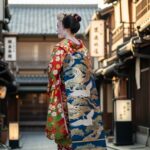
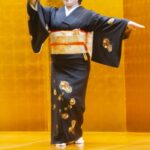

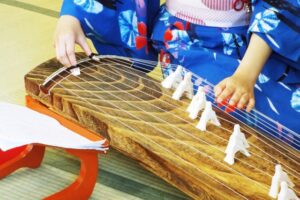
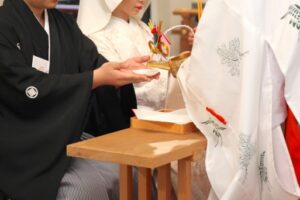
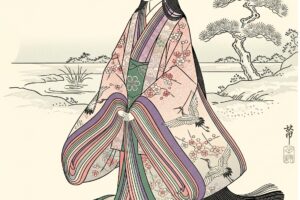
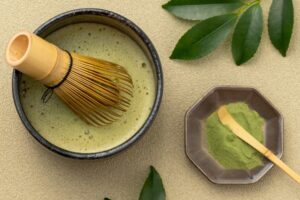
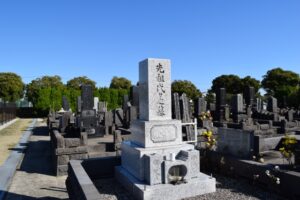
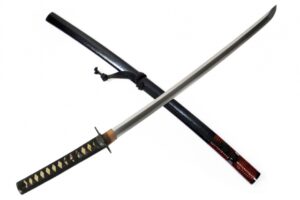
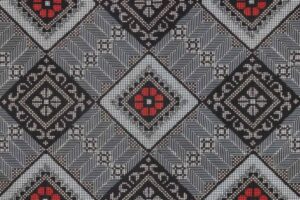
コメントを残す